Week 6
After receiving feedback about the perceived disconnection between our traditional game and the concept of food, we held a discussion to reassess our approach. Simultaneously, we came across existing research projects that explored the intersection of our work with the theme of food.
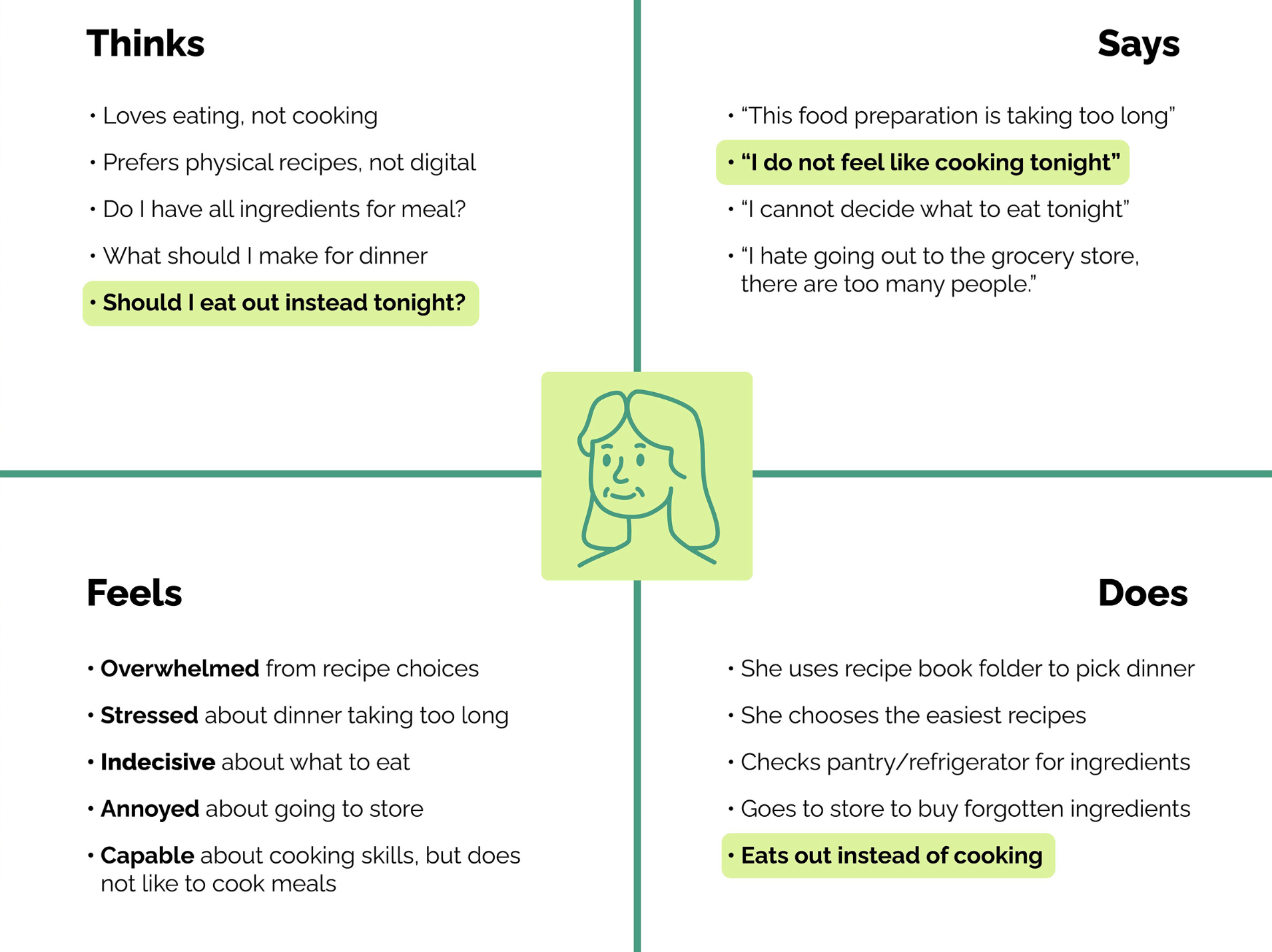
We discovered that people often seek alternative methods for cooking, especially when traditional recipes demand extensive preparation and cooking times. Similarly, we encountered challenges in committing to the gamified cooking concept due to these practical constraints. As a result, we decided to take a step back, reevaluate our approach, and delve deeper into the traditional game concept through directed storytelling.




Guided by seven questions and additional tailored follow-ups, we gathered insights into the types of childhood games played, the locations, and the reasons behind their diminishing engagement. A deeper analysis revealed that traditional childhood games offer more than cultural connections—they provide insights into climate, architecture, seasons, resources, and more. For example, the Chinese game 'Pulling Stem/拔根儿,' a leaf stem tug of war, reflects cultural preferences for outdoor play, the presence of distinct seasons, and highlights children's creativity in crafting games with natural resources.


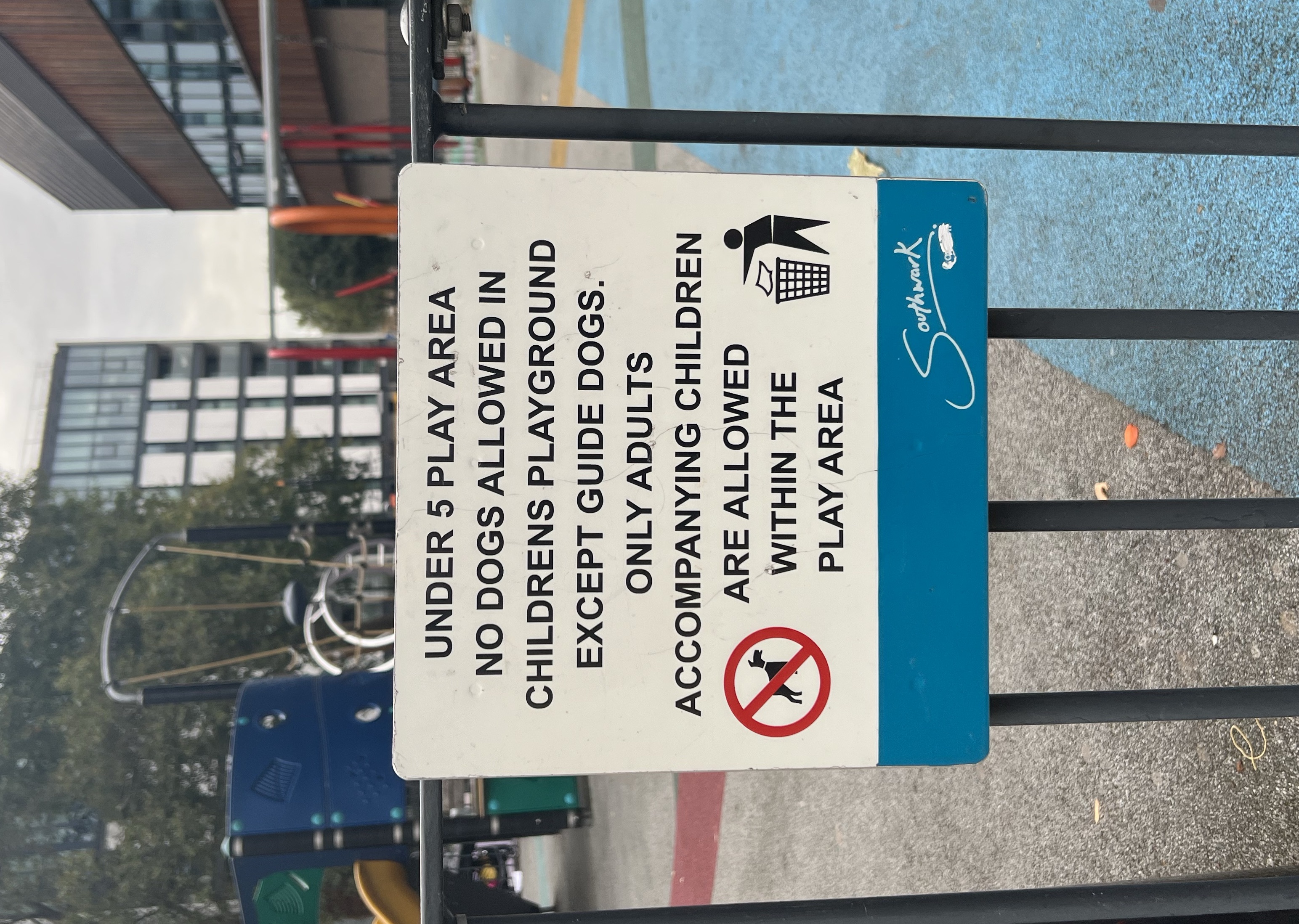
Directed storytelling sessions also uncovered that adults desire to play in playgrounds, especially after stressful days, but often feel self-conscious, particularly with children present. This led us to think about why isn't there a public playground designed specifically for adults?
To gain a deeper understanding, we conducted on-site research by visiting public playgrounds, where we observed individuals interacting with the space. Interestingly, we noted that these playgrounds commonly enforce age restrictions at the entrance. This discovery led us to ideate and prototype designs specifically catered to adult play areas.
During this exploration, we observed the widespread enjoyment of trampolines among kids and teenagers. Experiencing the fun ourselves, we envisioned integrating this playful element into urban walking. Our experiments included walking on curbs, trampoline jumping, and introducing hopscotch on a university campus. Notably, our observations revealed that people actively engage with and enjoy hopscotch when it's introduced in university settings.




Prototyping traditional games like ‘Three Kingdos/华容道‘ and wooden labyrinth ball steering allowed us to test interactions and identify suitable public spaces for playing these games. We considered the incorporation of traditional games into existing playground structures, such as placing wooden labyrinths on balancing structures. However, finding a suitable site for ‘Three Kingdoms/华容道‘, a game requiring time and mental effort, proved challenging.
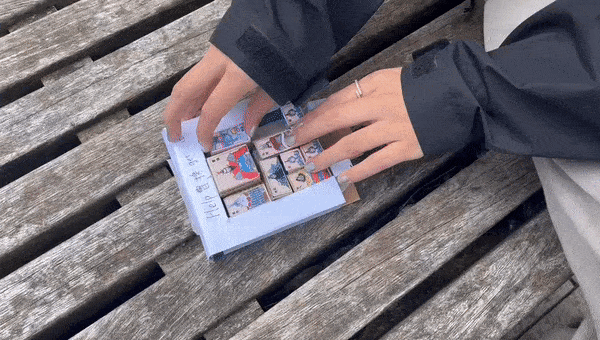


During our tutorial with Wan and Greg, we presented our ideas of adding a traditional element to existing playgrounds, hosting an exhibition about traditional games and their stories, and integrating play into everyday life.
Feedback:
- What’s the difference between urban structures and our proposal?
- Collect elements from different cultures and make it into an adult playground
- How are you gonna monitor it?
- What is it about? Cross cultural game or about storytelling?
Week 7
After talking with Greg and Wan in our tutorial, we figured out that we can enhance our design idea of bringing games to public parks. Greg talked about 'liminal space,' and that idea stuck with us. We started thinking about the possibility of putting these games in a different place, so people would interact with them more and make them a regular part of their daily lives. Since we were curious about liminal spaces, we began reading and exploring to understand what they are and where we can find them in a city like London.




While exploring, Kyeli stumbled upon an alleyway intentionally crafted to be playful and engaging, with the purpose of fostering a friendly environment and deterring any dubious activities. Witnessing this unique alley sparked the idea of transforming similar "in-between" transitional spaces into whimsical playgrounds for adults or kids. Our vision for this potential design was to blend these playful spots into pathways and daily commutes. Rather than requiring people to stop and read instructions, like our park games, we envisioned incorporating simple, carefree games that could infuse a sense of fun and playfulness into these otherwise empty and dimly lit alleys.
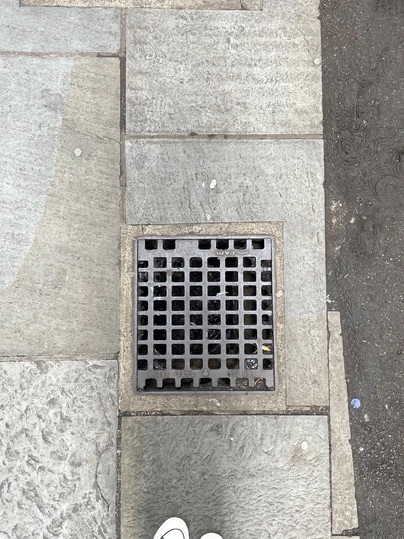
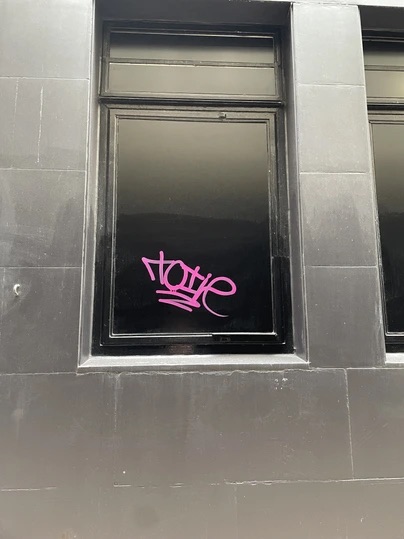
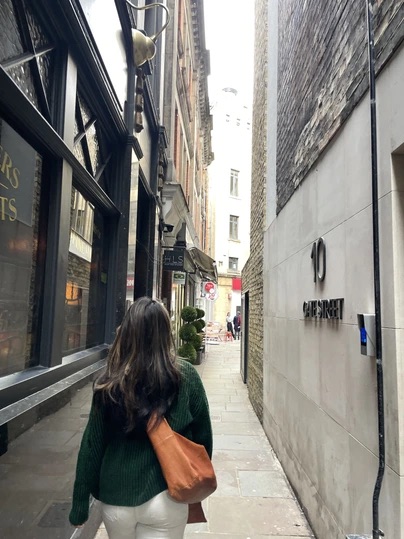
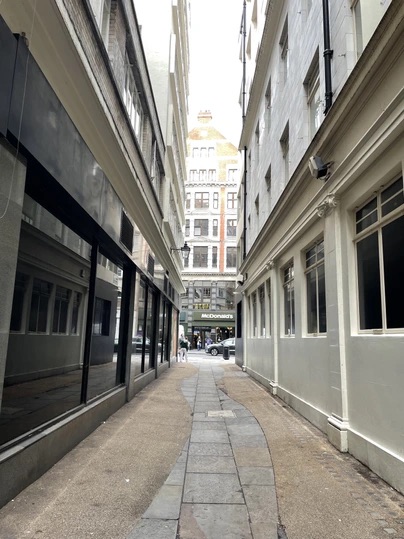
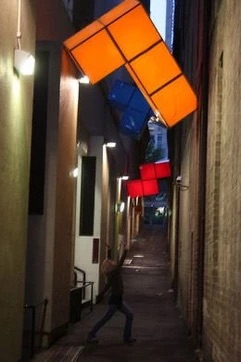
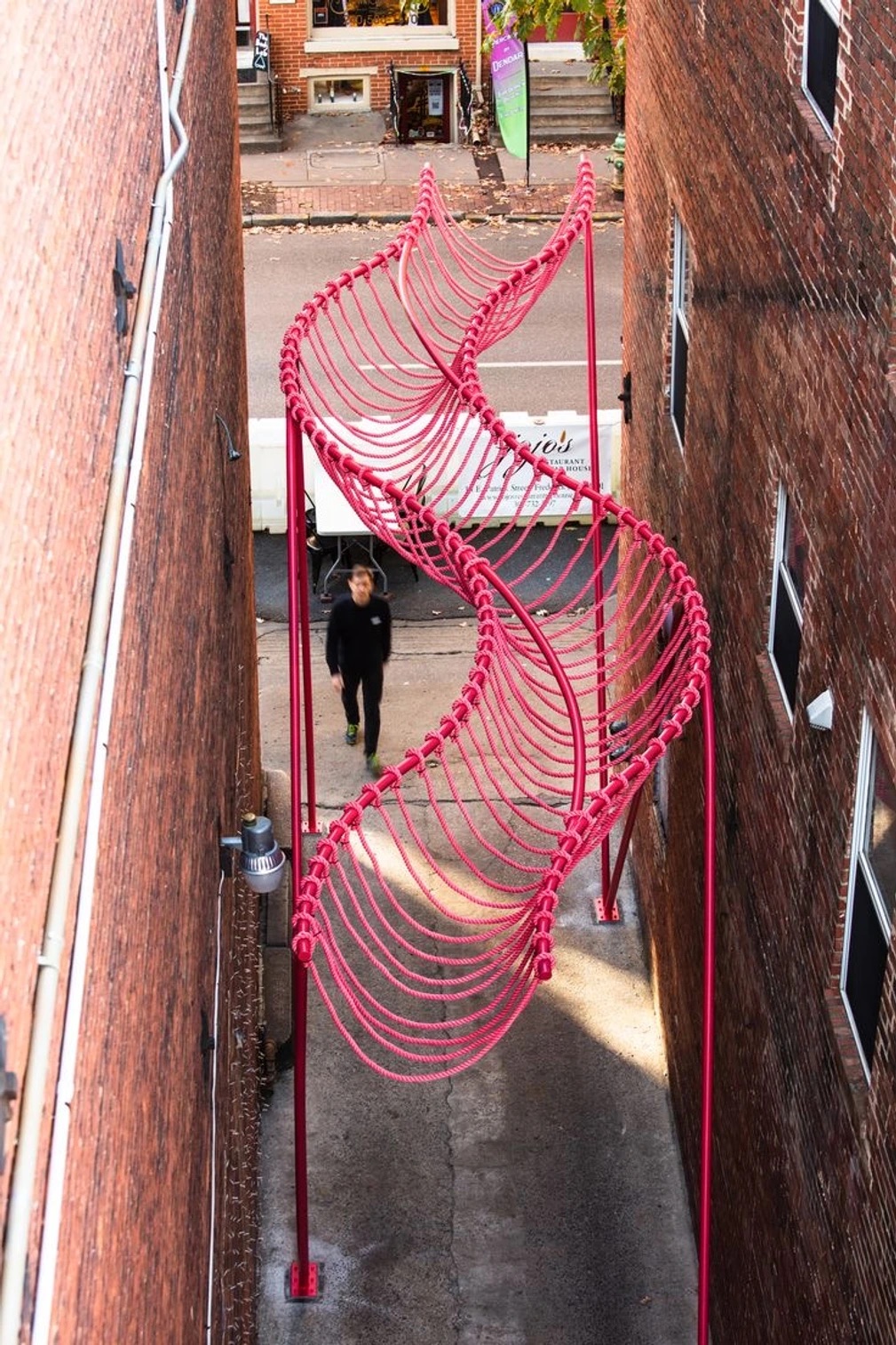







Tutorial with John:
- Our previous concept with the infographics is pretty strong & beautiful in itself
- Why were we trying to add more to it when what we've made already works?
- Instead of trying to design new things, take what you have an design around it
- What would your concept look like if it was an exhibition at the V&A about traditional games? What more would you add to the overall experience to enhance it?
- Thing about something like a transmedia experience?
- He gave examples of an English folk dance teaching institution in Camden - the design is the institution, the space, how it works etc.
After listening to John's advice, we decided to change our direction and not focus on the alleyways idea anymore since it didn’t align with our research question either. He thought it wouldn't be as effective as our original plan. John suggested thinking of our concept as an exhibition at the V&A that celebrates traditional games. He encouraged us to make the experience even better.
So, since John suggested designing around things, we started thinking of ways to improve our current games experience. Instead of just having the infographics in the park, we decided to make them more interactive (as shown in the picture) and move toward the idea of a "traditional games arcade/archive”.


We started putting together the traditional games collection by learning about the history of the traditional Jianzi (chapteh) game. At the same time, we made brandings about how it should look and how people should play it on screens. In terms of making the prototype, we asked Joanne at the CTL for advice, and she gave us good ideas while also telling us about possible problems and safety issues. One big problem we found was that making a wireless chapteh was hard because it would be too heavy, and using wires was not safe, and it meant the game could only work in a small area on participant's bodies.




Experiment with the game Batu Serebam and Jianzi (Chapteh):




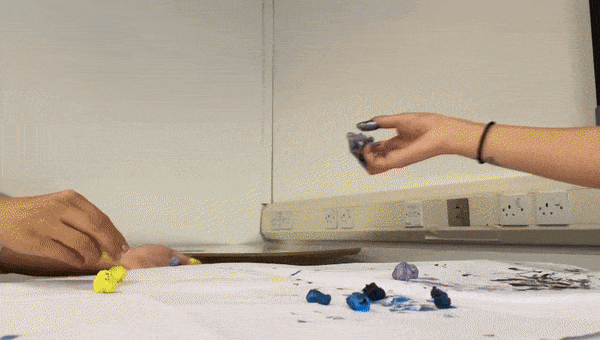

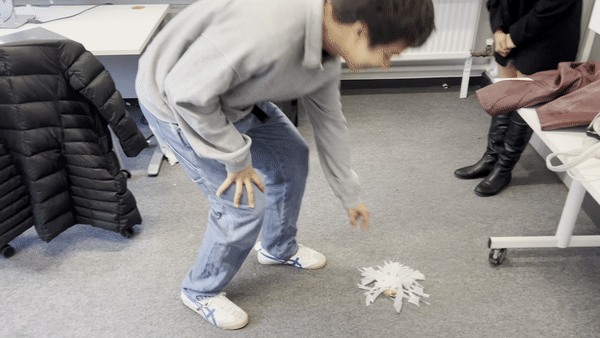
We tried making a sample of the game to see how it would be to play and find ways to fix the technical and safety problems. Our tests showed that the chapteh needs to be light; otherwise, it falls too fast, making the game hard to play. We also realized that using wires is risky because people might get tangled in them. This problem made us feel discouraged, so we decided to think again about what to do next.
Week 8
We paused to reflect on our progress and realized that our London Design Festival project was quite impressive. It’s a shame to let it go, and as John said design things around what you have at the tutorial, we decide to revisit it.
Upon reviewing all the tests and conducting storytelling research, some individuals interested in playing these games again expressed difficulty in gathering people to play them in one place at the same time. We would like design things from this angle and work on how to engage people.
So we came to agree on designing a Traditional Games Fest that would also serve as an archive. This festival would feature play areas with our infographics, a map displaying all the games available (which turns into a game itself, called paji), circular tokens to appreciate participants, competitions, and a website holding all the information in a digital format. Our goal for the festival is to ensure it's enjoyable and that nearly everything is designed to be playable.
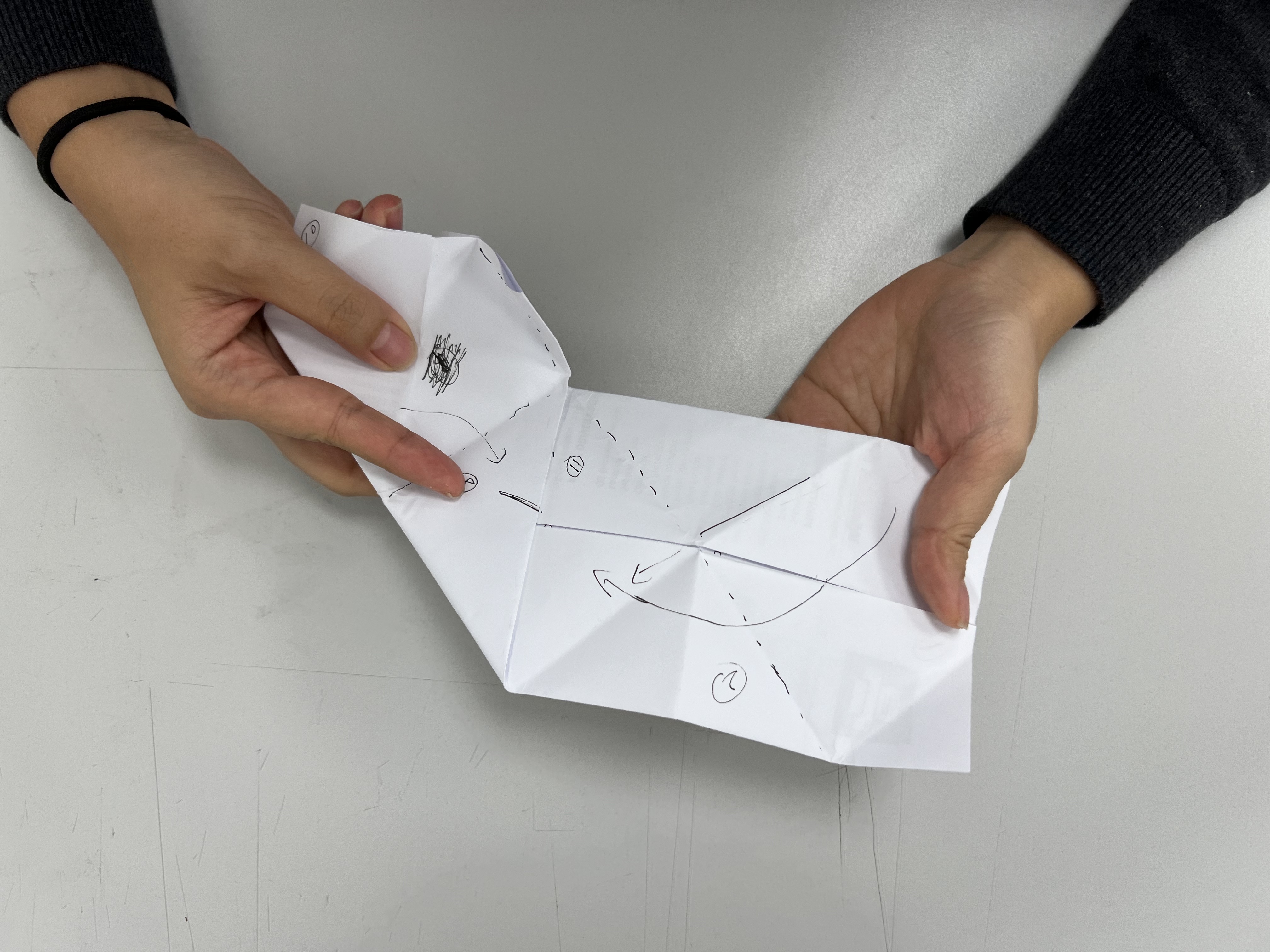


We experimented with several rounds of folding Paji, starting from hand-drawn folds to creating a template. We attempted to enhance the instructions by adding steps, arrows, and words to guide people through the folding process. Additionally, we ask people to test it and we make adjustments accordingly until they could grasp how to fold it.
Our new proposal centered around designing an interactive archive of traditional games, presented as a festival during International Games Month. We selected Hyde Park as our festival venue due to its status as one of London's most frequented parks. Situated centrally and boasting easy accessibility, it aligns perfectly with our eco-friendly festival ethos, supported by its green initiatives and sustainability focus.


The festival will include dedicated areas for playing games with informative infographics. Moreover, there will be a foldable map displaying the available games, which turns into a game called Paji. The main idea is to make sure that everything given to participants at the festival encourages and improves the gaming experience. Participants are welcome to take part in competitions, and have access to a website with digital information about the event.
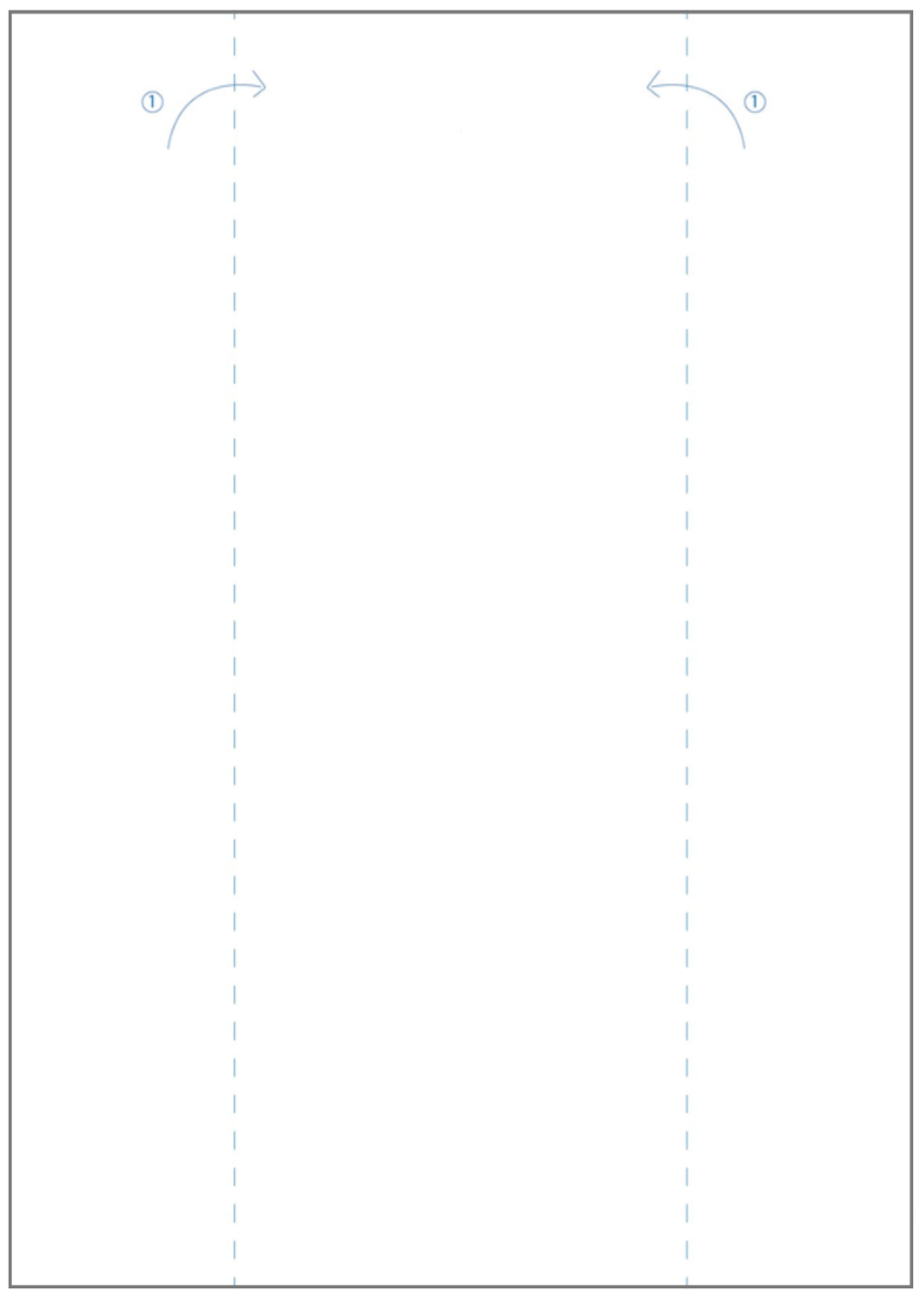


We also started restrusturing and refining our infogrpahics after receiving feedback from others. We cocreated it people who has never played the games and altered the step-by-step instructions according to the phrases they use to explain the game to someone else.
We began refining our infographics following feedback from our testing participants. Collaborating with individuals unfamiliar with the games, we adapted the step-by-step instructions based on the phrases they naturally used to describe the games to someone else.



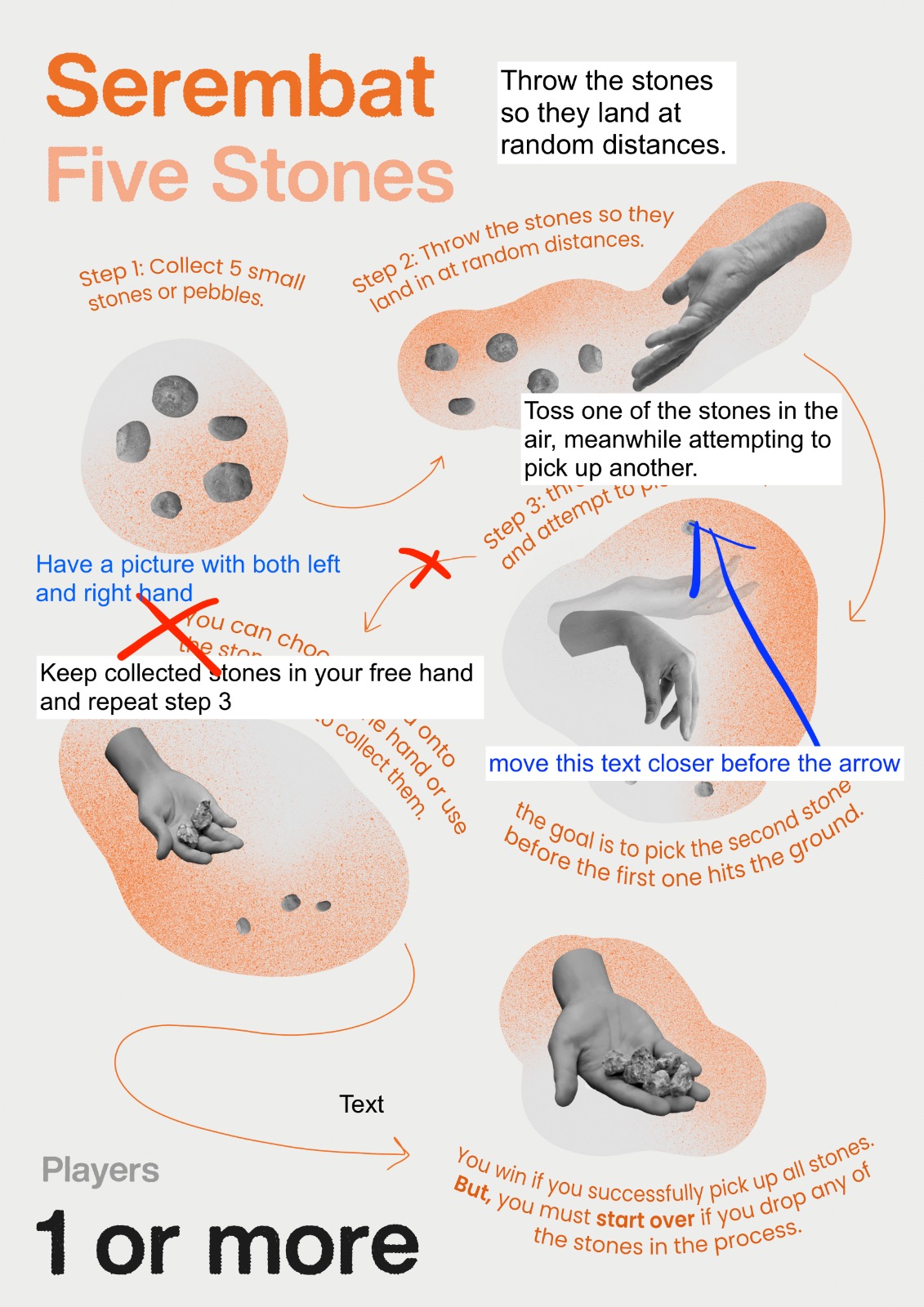

In a subsequent tutorial with Wan, Greg, Al, and Tyler, we received insightful feedback:
- Utilise social media and create a unique hashtag for Instagram engagement.
- Consider physicality—create booklets or collectible (infographic) for easy sharing.
- Provide downloadable or shareable PDFs for wider accessibility.
- Emphasise that the project is an invitation to share diverse cultures.
- Develop a toolkit on the website for others to host similar festivals in their areas.
- Implement leadership boards on the website or physically as scoreboards.
- Conduct thorough game testing to validate their relevance in the festival context.
- Distribute toolkit booklets to attendees for better engagement with the games.
This feedback guided our ongoing refinement process as we strive to create an inclusive and engaging Traditional Games Festival experience.
Week 9
Based on the feedback we received, we want to continue working on designing infographics and use social media and promotional posters to engage people. Additionally, we aim to concentrate on the booklet toolkit concept, making it easier for people to replicate the festival and pass on the traditional games to the next generation in a more collaborative way.
Design process:
We started the branding from picking colors, we started from the colors used a lot in our culture, and add more colors that match with the colors we picked and also make it pop out so it can get people’s attention.

After refining the language and steps through several rounds, we completed our final infographics. We also included QR code links to video explanations, providing an option for people who prefer watching and learning.
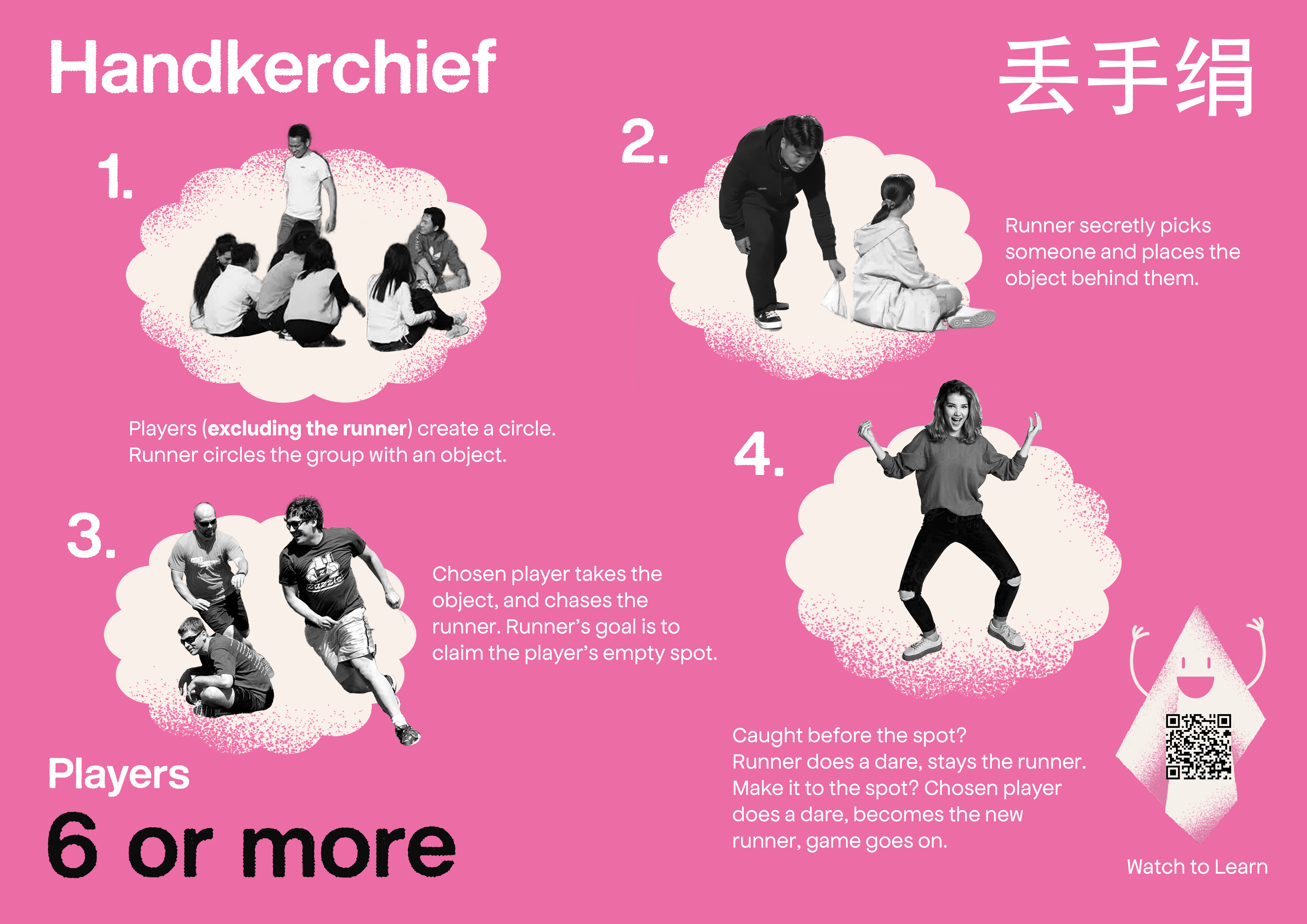


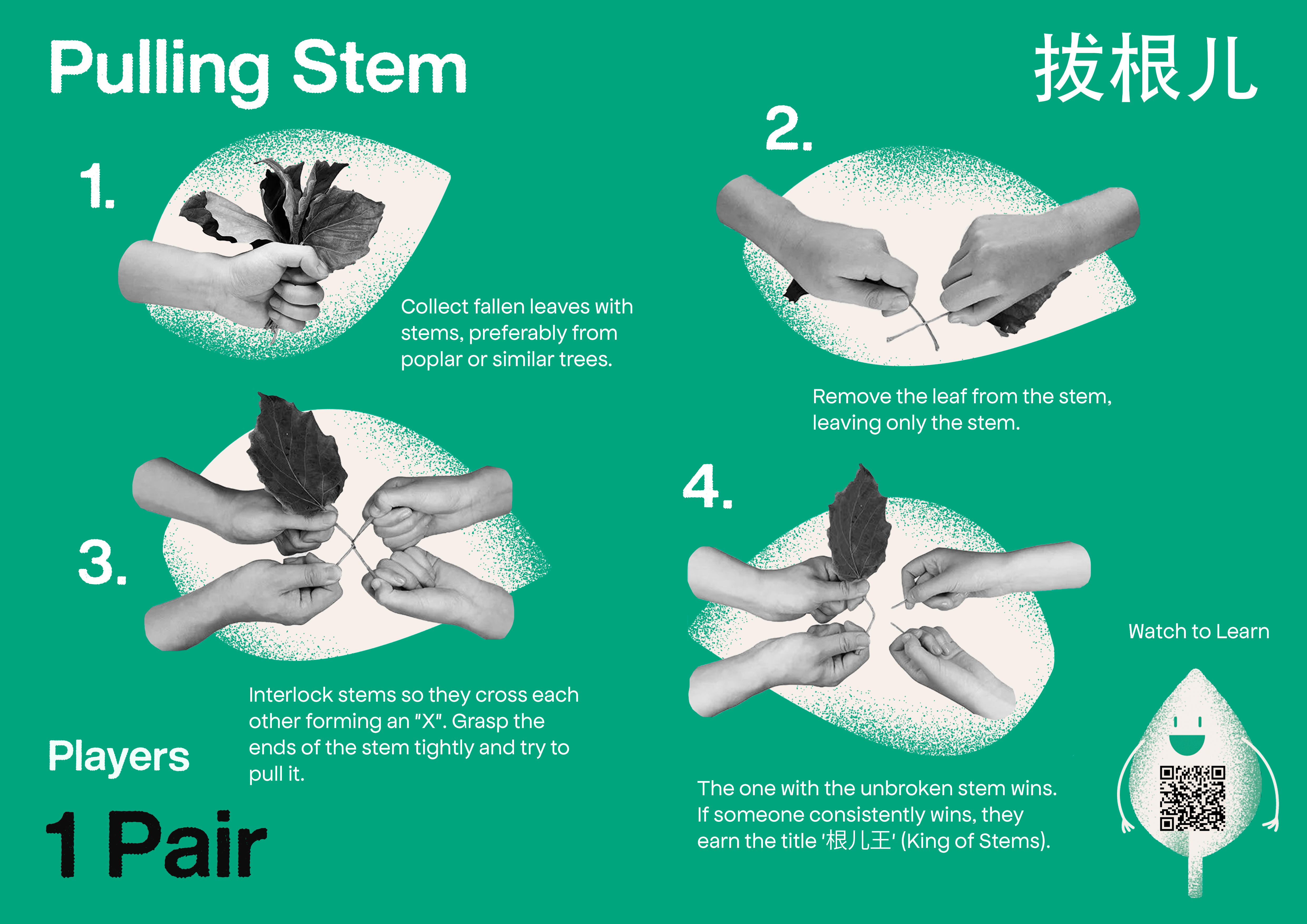
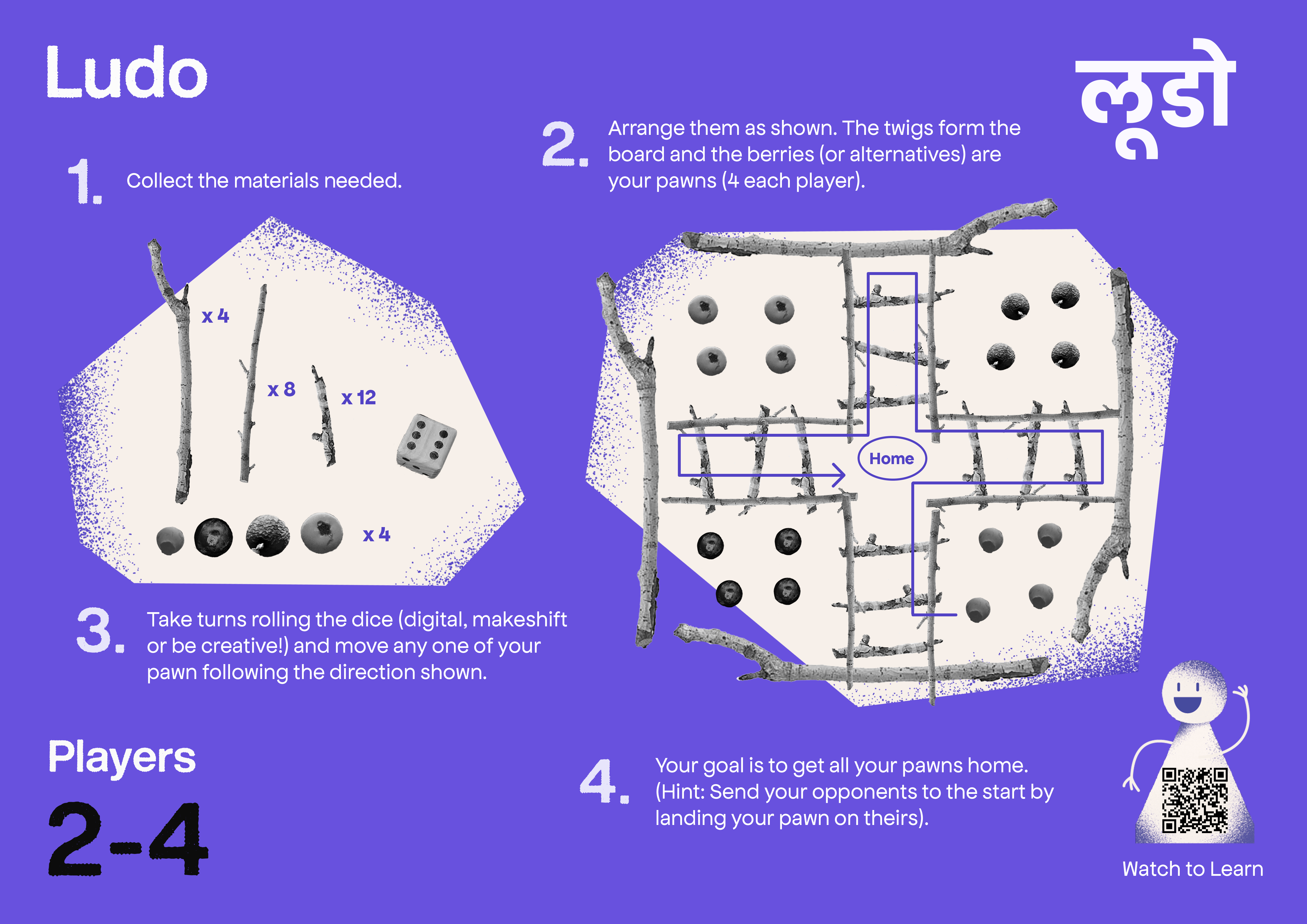

In the meantime, we had tutorials with Taylor and AI, and we gained valuable insights into how the festival would look like. They particularly liked our Paji idea when we presented it. They suggested that, for portability and the idea of passing on, having six Paji instead of six large infographics would be a good idea. This inspired us to transform our infographics into Paji and possibly create something to store the Pajis next to the infographic display. This way, it would be more convenient for people to revisit the rules in the midst of their play.

For our branding concept, we also decided to create characters for each game as representation, using the materials used in the games. These characters can also be at the front cover for each Paji, making it easy to distinguish and separate them.






For promoting our Fest, we created posters of different versions and social media page for posting our games and encourage people to share their games and stories.




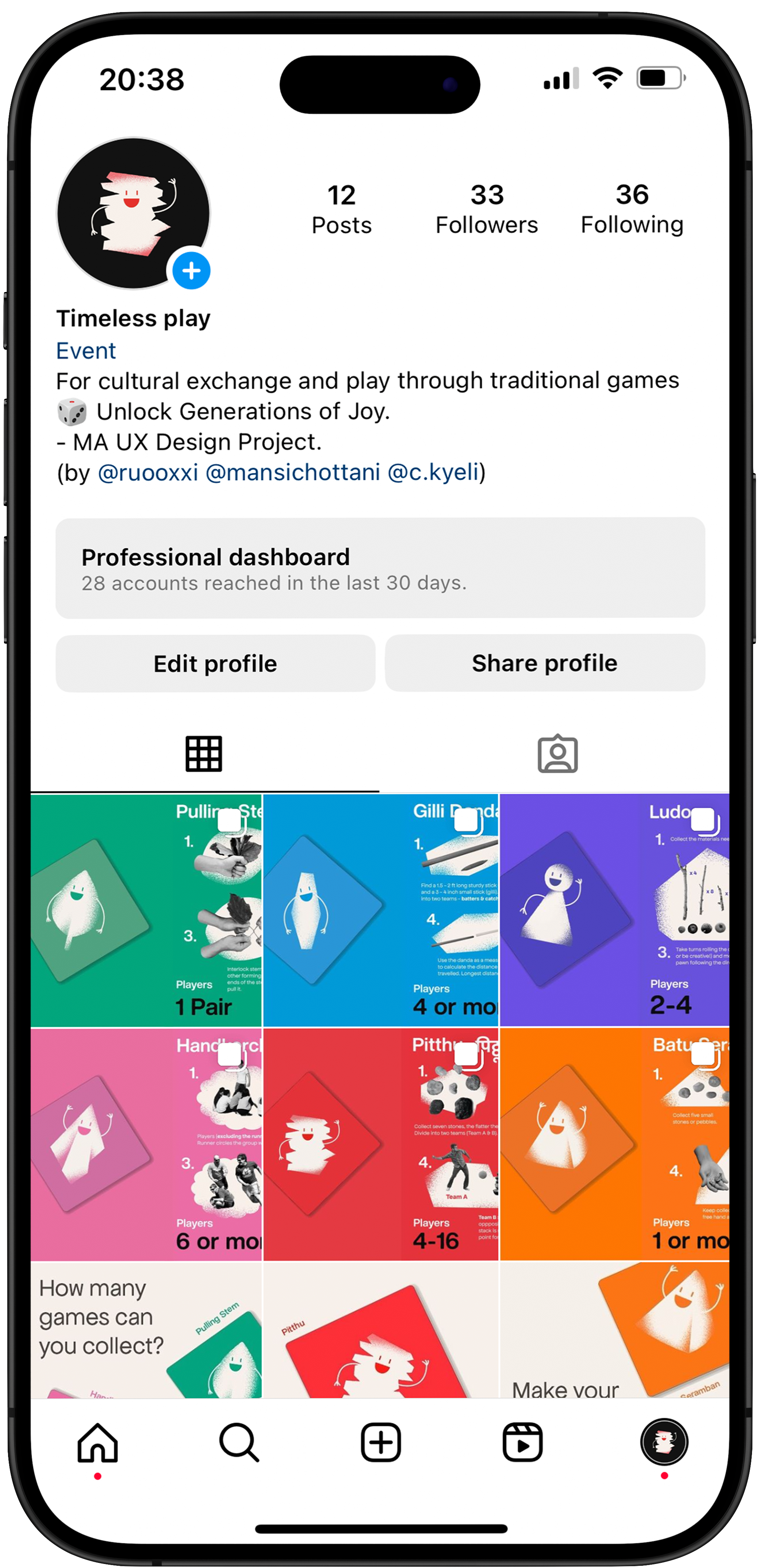


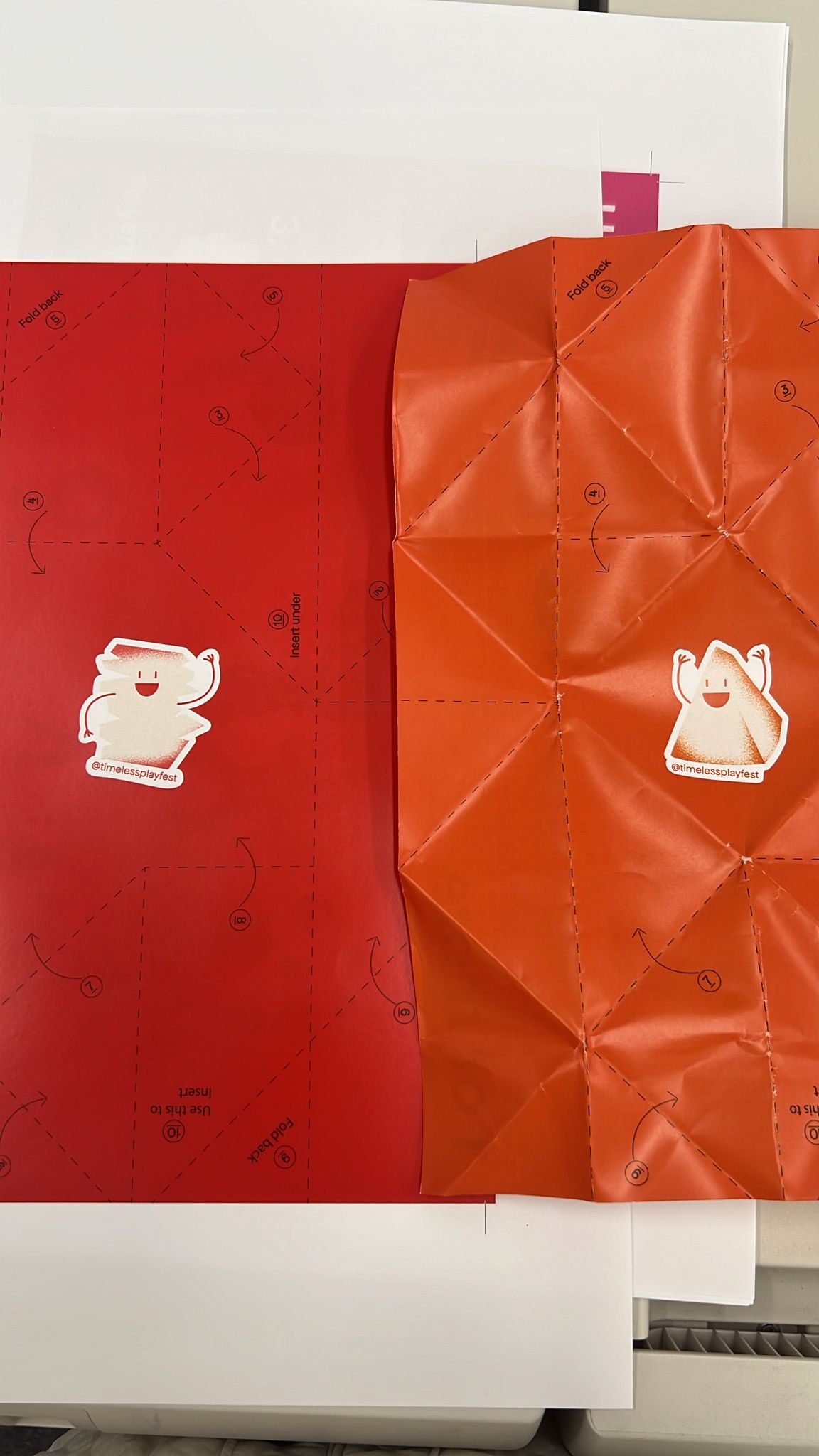

As we appoarching to the toolkit concept, we decided to make templates and add instructions for people to host the Fest.





















In the Fest, participants could grab a Paji from a dispenser and learn how to play traditional games on their own. We crafted six dispensers by laser cutting plywood and assembling the pieces with PVC glue. We found a helpful website (https://en.makercase.com) to assist us with our laser cutting file. The website has a feature that designs boxes and generates the lines needed for laser cutting.
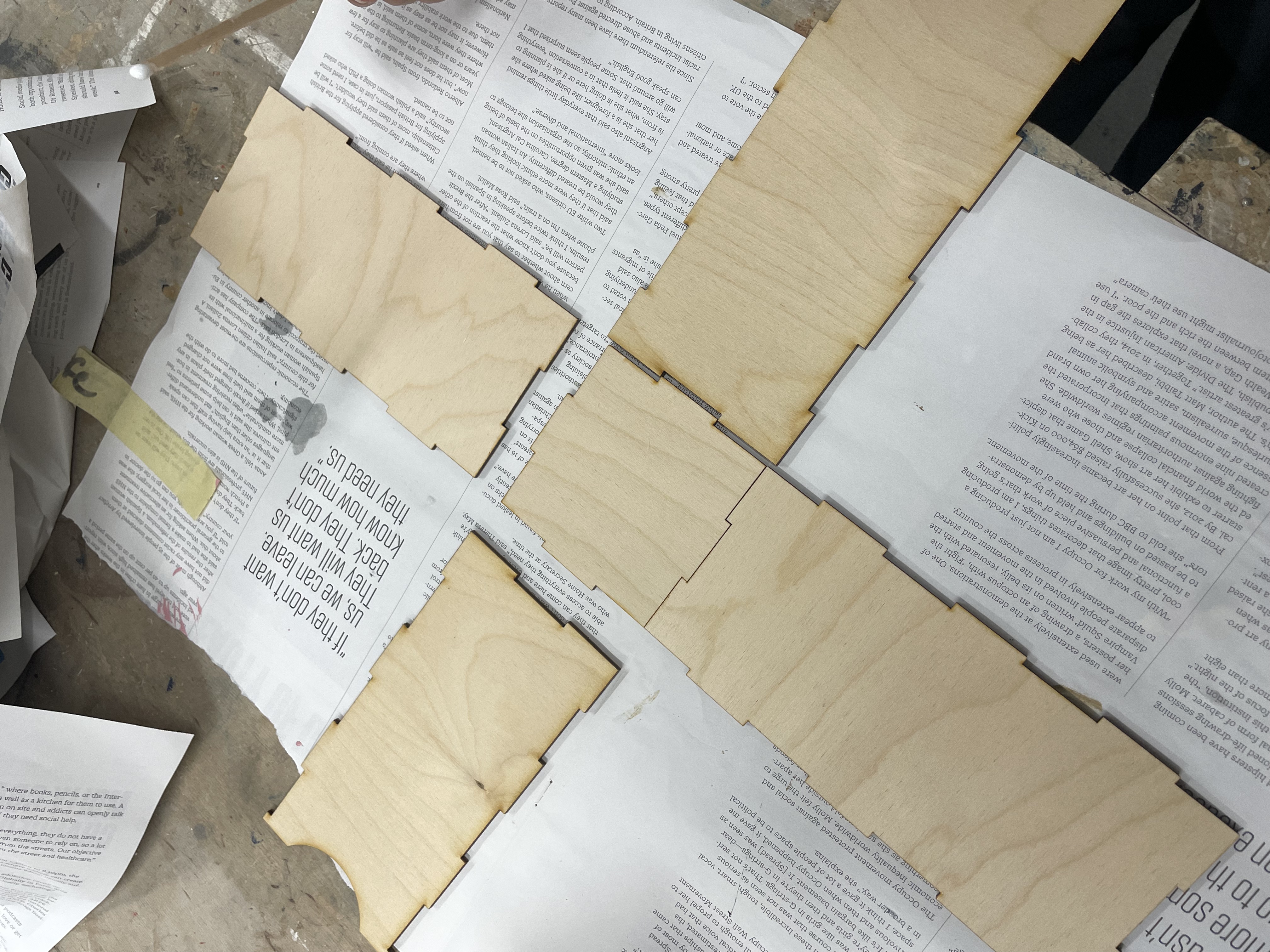
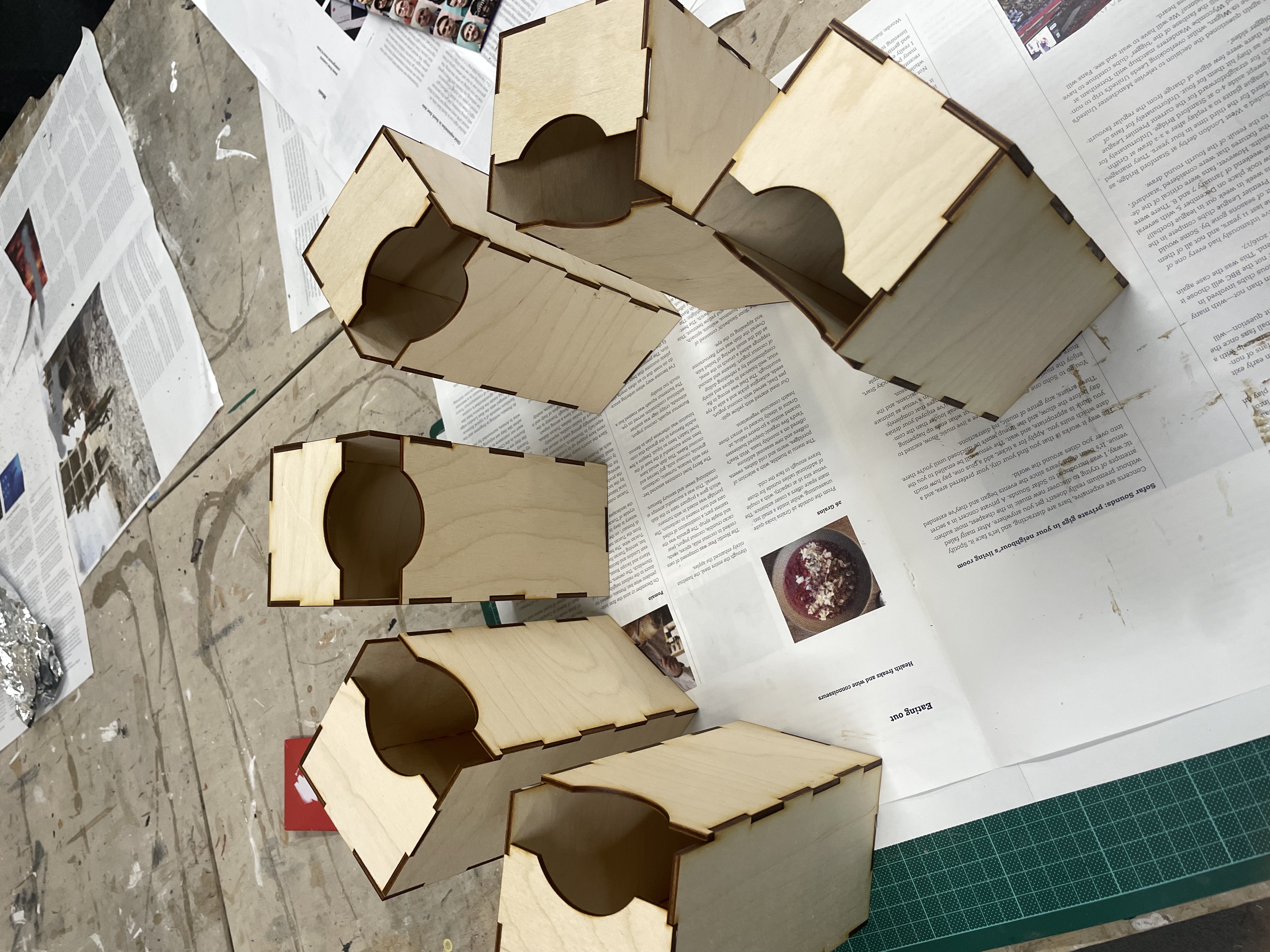

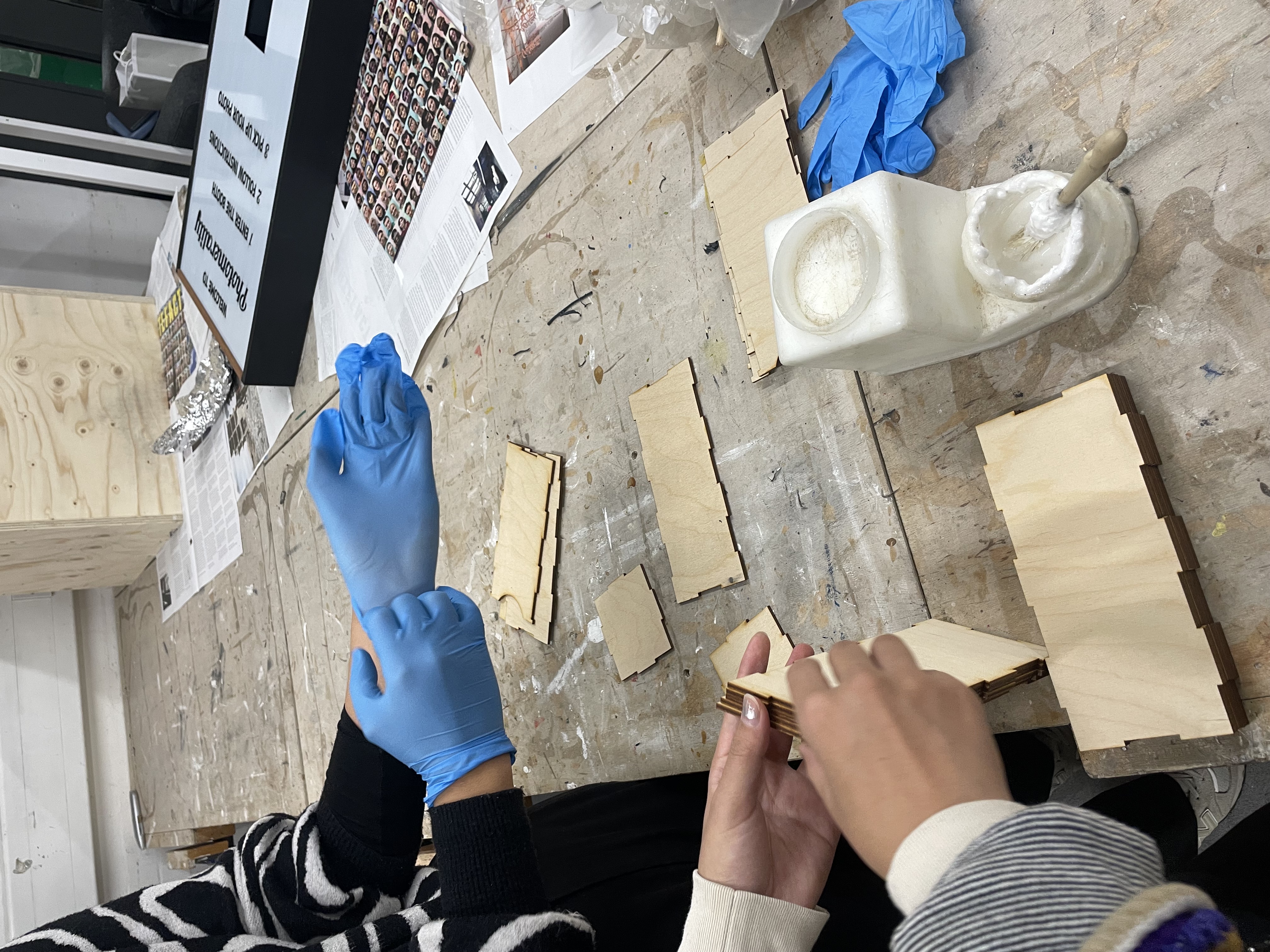
Week 10
Hosting the Fest:
We organised our traditional games festival across two days, on November 16th and 17th, held at Geraldine Mary Harmsworth Park. Our setup included a board featuring four distinct traditional games accompanied by an introduction outlining our project's purpose and who we are. Additionally, we distributed stickers and Pajis as promotional materials for both the project and the games.




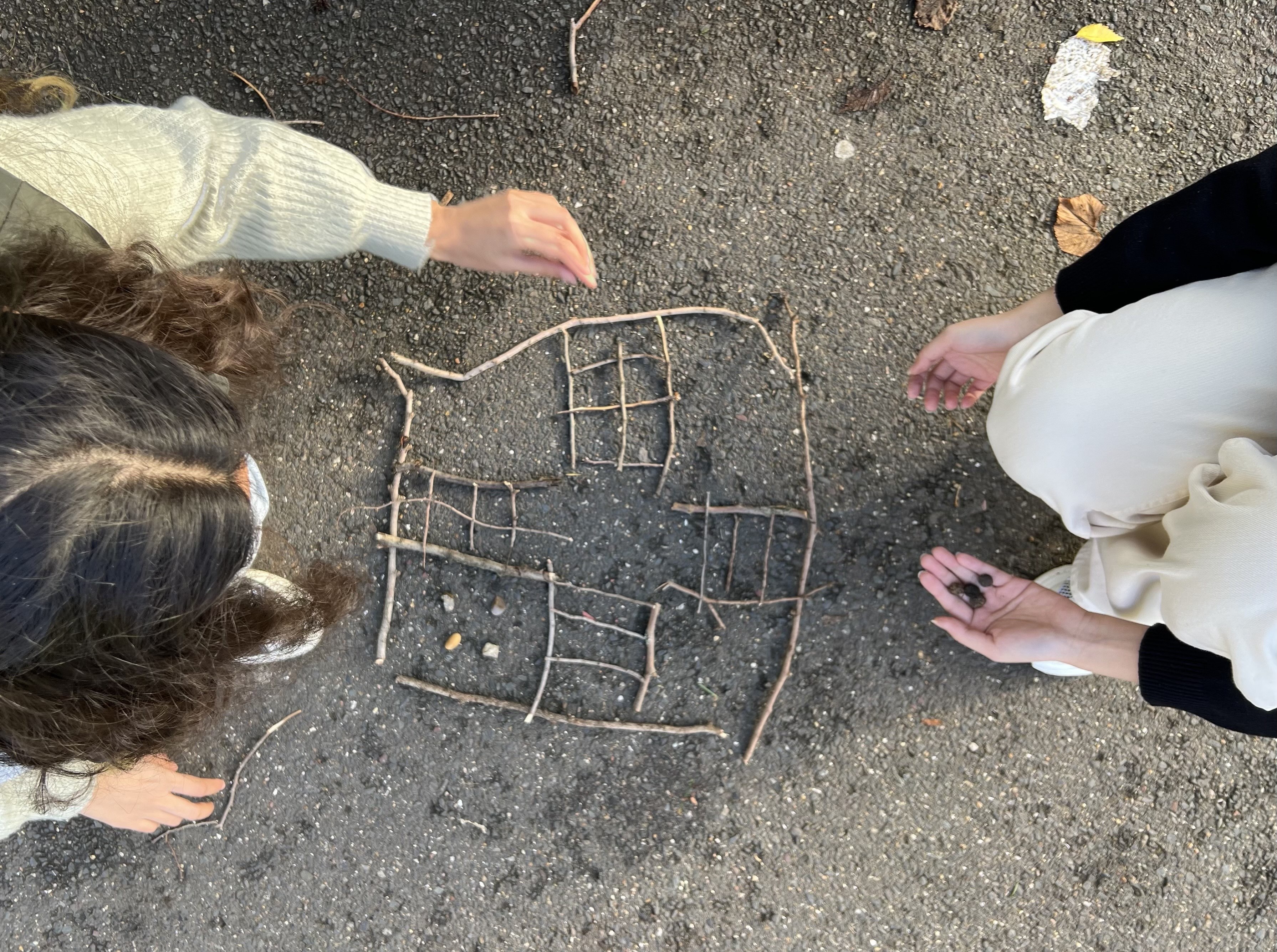


Observations:
- We kicked it off by personally participating in some of the games, people would stop and watch us play.
- Our display attracted high school students and their parents in the aftrenoon, while morning sessions saw increased. participation from adults and the older generation.
- Some paused to watch and praised the concept, commenting positively on the innovative idea and the appealing nature of the game. Numerous individuals took photos of our ludo board, especially when people were actively engaged in playing.
- A woman stopped to take a photo, telling us her granddaughter would love to play these games.
- No one engaged with the QR code; instead, they preferred asking for information directly.
- The display stood out, attracting attention, particularly from those with children, who showed greater interest in participating compared to adults.
- Many remarked on their nostalgic memories, mentioning they had played similar games in their youth.
- When attempting to film the fest, people avoided the camera, expressing reluctance to be recorded, despite their interest in the display.
- Parents shared their nostalgic experiences with their children.
Feedback:
- The concept successfully encouraged people to disconnect from their phones and engage in simple, enjoyable activities if they chose to participate.
- Some attendees identified similarities between the games showcased and traditional African games, expressing interest in creating their own game.
- Familiarity with similar games in their respective countries allowed some to play without needing instructions.
- Individuals from diverse cultural backgrounds, such as Nigeria and Japan, expressed their delight in experiencing games they played before, appreciating the use of natural materials and expressing a desire to engage in similar events in the future.
- One participant envisioned a larger fest with diverse games, similar to a food festival, spread throughout the park.
- Participant said the infographics would be better with clearer instructions provided through visuals, arrows, and highlighted keywords.
Reflection:
Initially, we were hesitant about conducting public testing, feeling uneasy about approaching people. However, we challenged ourselves to interact with the public, gradually becoming more comfortable in the process. Hosting the festival in a public setting proved to be a valuable decision, providing us with feedback from our target audience and an unbiased perspective. Although our main goal was to promote public participation in traditional games, we acknowledge the missed opportunity of capturing more nuanced interactions such as facial expressions, comments, and body language, which could have offered valuable insights. Obtaining participant consent for filming posed a challenge, resulting in a lack of initial spontaneous reactions from festival attendees.
For this project, we faced numerous challenges as we explored tradition in a broader context, leading us in various directions. As we conducted more research and brainstorming, new ideas emerged, always distracting us from our initial thoughts. Navigating a long-term project posed difficulties in terms of time management and planning. We also came to the realization that design, especially when centered around tradition, is an ongoing and evolving process. The festival and toolkit concept emerged as potential long-term endeavors. Despite these challenges, we are very happy with the results. Contributing to the revival of traditions and offering an offline experience in our fast-paced era has been a fulfilling journey.
Reference:
Balci, S., & Ahi, B. (2017). Mind the gap! Differences between parents’ childhood games and their children’s game preferences. Contemporary Issues in Early Childhood, 18(4), 434–442. https://doi.org/10.1177/1463949117742788
Sulistyaningtyas, R.E. and Fauziah, P.Y. (2019) The implementation of traditional games for early childhood education, The Implementation of Traditional Games for Early Childhood Education | Atlantis Press. Available at: https://www.atlantis-press.com/proceedings/iccie-18/125910410 (Accessed: 04 July 2023).
Lestari, P.I. and Prima, E., 2017. The implementation of traditional games to improve the social emotional early childhood. Journal of Educational Science and Technology, 3(3), pp.178-184.